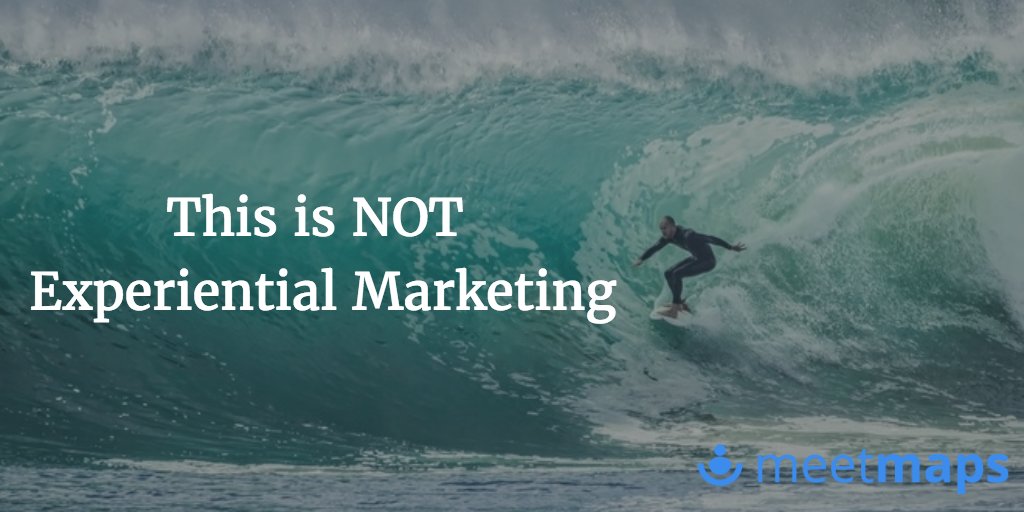The advent of the Internet age has allowed us to peddle our goods and services to almost every corner of the globe and dissect our market segments down to the narrowest of long tail customer profiles. Therefore, it should come as no surprise that many of us in marketing, especially those of us with a mostly (or completely) digital brand, face an emotional disconnect with our target audience. After all, we may be never actually be sitting in the same room together, face-to-face.
This is a problem.
Our ability to build relationships and craft meaningful experiences relies almost exclusively on our ability to create a deep and personal emotional value for our customers. With all the noise and disruption taking place around us, how do we overcome this barrier? How do we increase our emotional value?
Why, through events of course!
Digital brands that exist independent of a physical location or specific geography must go further than their blog and social media campaigns to develop an authentic bond with their target audience. In order to generate a deep emotional impact with their target, they need to create new experiences. They need to develop channels for experiential marketing.
What is Experiential Marketing?
According to Wikipedia, experiential marketing is a marketing strategy that directly engages consumers and invites and encourages them to participate in the evolution of a brand. Evolution of a brand? PC Load Letter? WTF that does that mean?
Experiential marketing is simply creating a space for you to include your target customer in a fun and memorable experience. There, that’s better.
The goal of experiential marketing is to form a lasting emotional connection to your brand that will build trust, brand loyalty and hopefully encourage a buying decision down the road.
How can I put Experiential Marketing to work for me?
Simple, host an event. If you Google “Experiential Marketing“, you’ll invariably come across dozens of examples of big brands trying to make a splash or “go viral” with some kitschy gimmicks that lure unsuspecting passerby into a torrent of activity.
While I suppose this does fall into the “experiential marketing” domain, it’s usually more of a compliment to multi-million dollar advertising campaigns than any sort of “deep emotional connection” maker.
That’s not what I’m suggesting. Instead, focus on your customer and how you can truly create an intimate setting in which to get to know them better.
For example, if you’re an e-commerce platform that sells cooking utensils, invite your potential distributors and industry influencers to an exclusive tasting by a well-known chef where s/he might prepare live cooking demonstrations using your products. Partner with an F&B company to select nice wine pairings or recruit a relevant food blogger to create the course menu and critique the results. Your products should be part of the supporting cast, not the main event. Their value will be inherent and interwoven into the fabric of the entire experience.
What you’ll create is a casual and comfortable environment in which to get to know your customers and prospects as humans. You’ll build trust, you’ll please your guests and you might even make new friends. Even in the world of B2B marketing, you’re still targeting another human being that has likes and fears and creature comforts the same as you. They don’t necessarily want to spend their off-hours attending another loathsome networking event or industry-related conference. So create an environment that caters to their likes and needs, not yours.
Maximize the emotional connection
While your event should be focused on creating an authentic experience, your boss will likely still appreciate it if you can tie in some form of return on investment. Here are some ways to increase the emotional connection, and thus the overall impact of your experiential marketing.
Set the stage
Your event should be held in a well-defined space. Whether it’s an auditorium, a dimly lit restaurant or the basement of your mom’s house, this is your theatre and it should be dressed accordingly. If your event hinges upon conversing, make sure the music is soft, but not dull, offer a welcome drink to match the occasion, and prepare special lanyards or customized name tags that go beyond ‘Hi, my name is’ from the local CVS.
Make your guests the stars of the show
Meetmaps was born for this reason. Your event isn’t just about delivering a message or showcasing a product. Your event is about getting your target engaged, connected and most importantly, involved. The most successful events we’ve seen are the ones in which each attendee adds value to the entire event. Meetmaps has you covered by displaying your attendees engagement in real-time and increasing the level of interaction.
Tell a good story
Good stories give meaning to our lives. Before the written word, humans passed on traditions and knowledge exclusively with storytelling. It’s the way we make sense of the world around us. Therefore, your event should be consistent with the greater storyline of your brand. The easiest way to develop your story is to focus on the “why” of your event. What is the most important value your customers will gain from this experience? Your marketing and invitations should lay the groundwork, your event will deliver consistency based on your brand promise and their takeaway should serve as the fairytale ending. Remember, everyone loves an underdog story. Show them why you’re David to the incumbent’s Goliath.
Don’t screw up the end game
The true impact of your event will live within the memory that your guests take home with them. The experience is only as strong as the emotions your customers felt and helped create. Your legacy will depend on how well you broker the experience, not the sale.
If you want to see how Meetmaps can help you measure the impact of your experiential marketing and emotional event experience, click here.


Trackbacks/Pingbacks